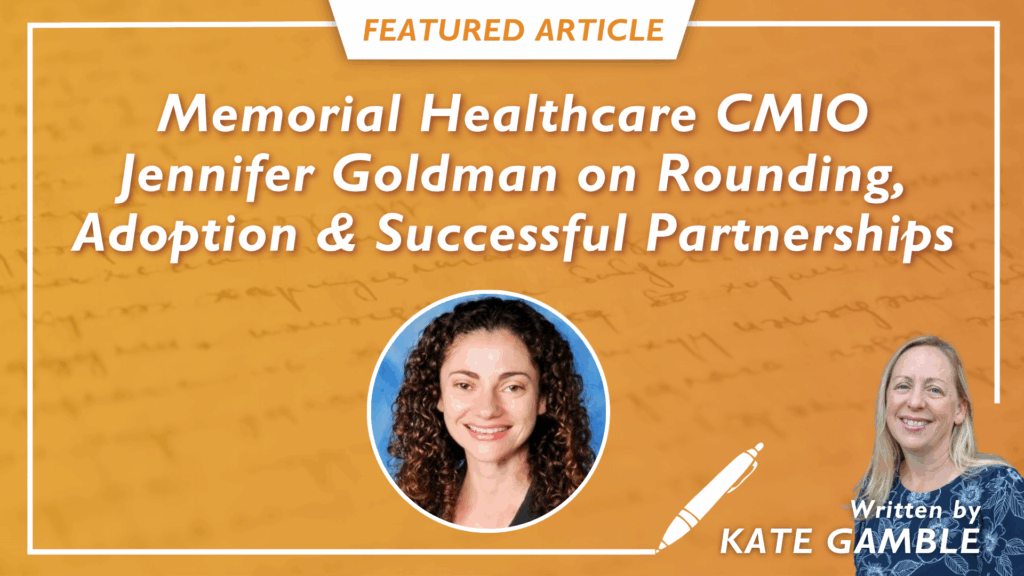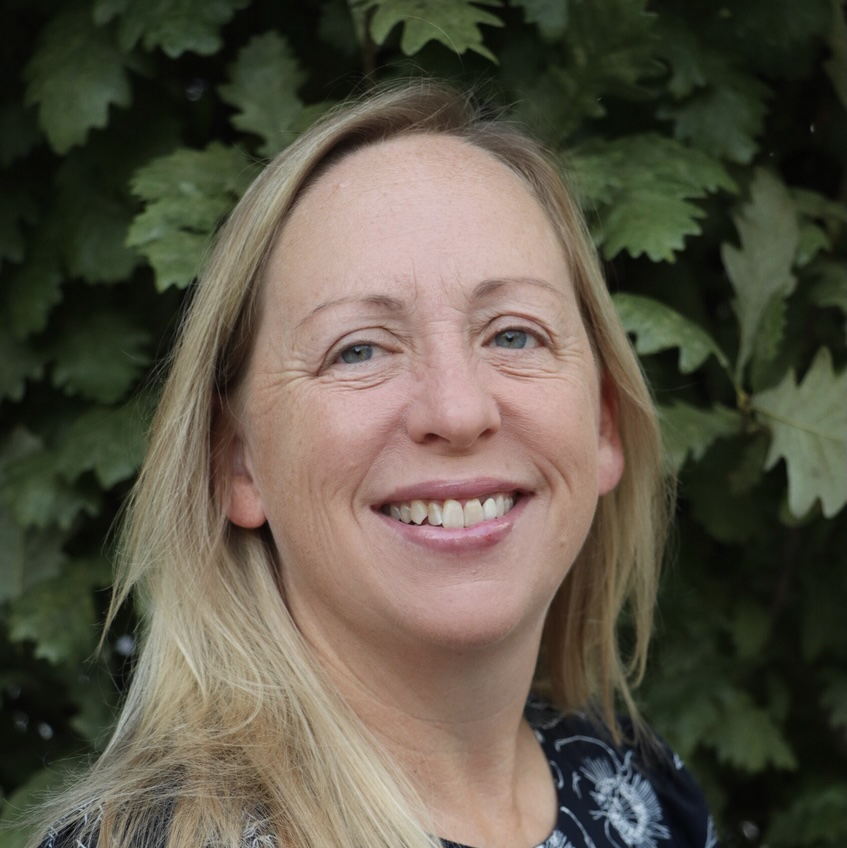
Jennifer Goldman distinctly remembers when she first got “bit by the informatics bug.” Memorial Healthcare System had created an express lane with its Epic EHR system that automatically added critical data points such as recommendations for mammograms or colorectal cancer screenings.
“That was my first real foray into informatics and the results were tremendous,” she said during an interview with This Week Health. Not only did it improve workflow – and, consequently, clinician satisfaction – but it also resulted in more than $25 million in shared savings. “I thought, if we can do that in primary care, then there are so many things we can do to impact physicians across the board.”

Jennifer Goldman, MD
Since that time, Goldman, who now serves as CMIO in addition to Chief of Primary Care, has led several initiatives that have done just that. Recently, she spoke about how her team is working to improve usability and efficiency, along with the importance of rounding and the keys to a successful CMIO-CIO partnership.
For Goldman, who continues to practice as a family physician, one of the core objectives is to ensure that clinical decision support tools live up to their name, rather than having the opposite effect. “We very carefully measure the number of clicks that providers have to endure when utilizing decision support tools,” she noted, zeroing in on alerts with the highest levels of dismissals without action. Her team then works with its multidisciplinary governance team – which includes physicians, pharmacists, nursing informatics and more – to identify alerts that are no longer relevant.
As it turns out, there are quite a few. According to Goldman, Memorial removed more than 1 million clicks from the EHR last year, simply by standardizing and combining wherever possible. But they didn’t stop there. “We looked at how the rates at which providers interacted with those alerts and how often they took the action it was indicating,” she said. “That increased tremendously once we removed the unnecessary clicks. We’re now above the 95th percentile in the country for Epic clients,” in terms of both interactions and user response rates.
According to her team’s data, users report saving more than 94 minutes per day, which has helped decrease “pajama time” while increasing satisfaction. “What we’ve seen organically is that they’ve been able to squeeze in more patients; that one extra visit is not as difficult to get in because the documentation burden is that much lighter,” Goldman stated. “We haven’t seen a tool that’s had this much satisfaction from both physicians and from patients,” both of whom have experienced “increased eye contact” during visits.
For CMIOs, it’s the ultimate validation that an initiative was worth the effort. “My key priority is increasing efficiency for providers,” she noted. To that end, “we’re constantly innovating and ensuring people can do their work without much friction.”
The key to that? Ensuring that every project focuses on “solving an actual problem on the ground,” that’s been vocalized by frontline workers. To that end, Goldman is part of a multidisciplinary team that participates in active rounding. “We talk about workflow in addition to how we can leverage technology to support it,” she said. “That’s been the most impactful thing.”
Also critical is a willingness to continue the conversation. “Rounding is one thing, but you have to follow up. And if you don’t get it done right away, they remember that.”
And so, “it’s been our intention to get things done immediately,” which means bringing along cohorts from nursing and physician informatics, along with technology. That way, “we can address things right then, and people can see improvements rather than waiting on us to find the right team member.”
It doesn’t stop there. Goldman makes it a point to invite those users to the table, which can help drive immediate adoption while also building “clinical champions so that when we’re rolling it out more broadly after the final phase, we have people beside us who will go to the bat for the new technology because they’ve seen how it works.”
Frontline workers, however, aren’t the only ones to benefit from rounding. It can also help physician and nursing leaders “stay grounded,” she added. “It highlights the importance of having a seamless way to document notes and interact with patients.” Goldman is then able to bring that perspective into her discussions with Chief Digital Information Officer Jeff Sturman, which are becoming increasingly important as organizations ramp up digital efforts.
“That communication is key to aligning priorities and ensuring we’re serving the needs of our users,” she said, adding that Sturman offers decades of experience in relationship building. “He knows our clinicians, he’s well-versed in the executive culture at the system, and he knows our priorities and our budget.”
For Goldman, the ability to leverage both of those perspectives and work “collaboratively at the table on go-lives is extremely important to secure physician buy-in,” she noted. And therefore, it’s “critical to the success of the organization.”


Questions about the Podcast?
Contact us with any questions, requests, or comments about the show. We love hearing your feedback.

© Copyright 2024 Health Lyrics All rights reserved